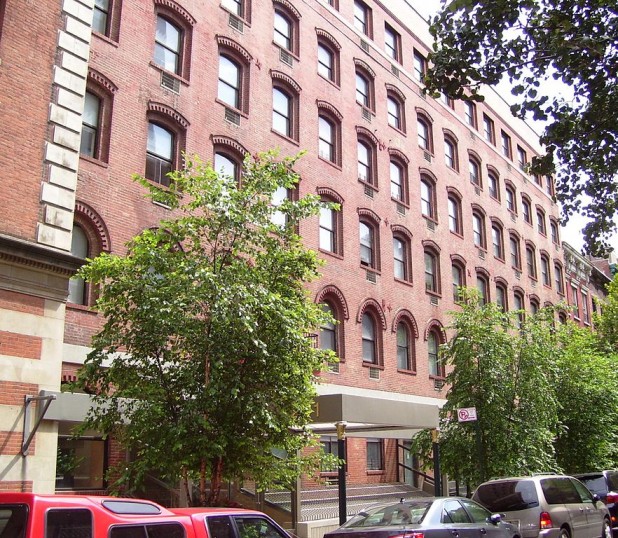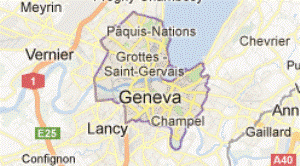HEADLINES
Class Segregation and the Housing Market
June 12, 2014 · 0 Comments

Above: 201-213 East 12th Street between Second and Third Avenues in the East Village neighborhood of Manhattan, New York City was a brick mill building built c.1880. In 1981 it was converted into rentable town houses and penthouses. (Photo from Wikimedia Commons)
By Lawrence Davidson:
Part I - Class Discrimination
There are many forms of discrimination, but one that Americans seem to have a high tolerance for is that based on class. Class discrimination is a natural outcome of capitalist ideology. That ideology, in turn, has been assimilated into American culture to the point that even the poor accept it on the assumption that they or their children might someday become rich.
Thus, unlike race and sex discrimination, that based on class has gone largely underregulated. Eventually the result is a number of embarrassing instances of abuse that become hard to ignore. That is what has happened in New York City’s housing market, as testified to by an expose on the front page of the Sunday 18 May New York Times real estate section.
Part II - The Situation:
Since 1943 New York City has sought to protect the income diversity of its population by classifying a percentage of its housing market as “rent-controlled” or “rent-stabilized.” There are technical differences between these statuses, but we will refer to them both as part of a regime of “rent-regulation.” Landlords and developers who provide a certain number of such “affordable housing units” (particularly rent-stabilized units) alongside of apartments renting or selling at market rates can qualify for city-or-state-subsidized low-interest loans and tax breaks. Even though the landlords and developers are thereby benefiting from publicly provided money, they still complain that the rent-regulation regime is a burden. While, with some exceptions, it does not prevent them from making a profit, it can prevent them from maximizing their profit. And that, of course, is what capitalism is supposed to let the businessperson do.
The piece in Sunday’s New York Times real estate section is all about how the landlords and developers are trying to make life unpleasant for their rent-regulated residents, who, as of 2011, have a median income of $51,000 and pay a median rent of $1,321 a month. Ultimately, as Mark Zborovsky, “a broker who sells bundles of rent-regulated apartments to investors,” put it, “his [the landlord’s] goal is to get him [the tenant] out of the apartment.” If these tenants do leave, their dwellings cease to be regulated and can be rented anew at market rates - which can be as high as $7,000 a month for a two-bedroom flat.
| Join Our Newsletter |
Part III - Some Examples
The tactic now being employed by the landlords and developers is to add amenities to existing buildings - things like roof gardens, gyms, playrooms for children, added storage areas and the like - and then prevent those tenants in rent-regulated apartments from using them. It is an interesting fact that in this game of class discrimination the doormen and other building staff become the ones charged with enforcing segregation for the owners.
The landlords and developers argue that these new amenities are “market tools” to attract high-end tenants who will pay market rates for apartments. Therefore, the amenities should be reserved for such residents. Actually, this only makes sense if you assume the potential high-end renter cares who else will be using the gym or playroom. In other words, the landlords and developers are assuming their clientele have the same class bias and resentments as themselves. Based on this assumption, some of them have gone so far as to put in separate lobbies and entrances (nicknamed “poor doors”) for those living in rent-regulated apartments. Here is how David Von Spreckelsen, the president of the development company Toll Brothers City Living puts it, “The two populations [rent-regulated and market rate payers] don’t mix at all. It really feels separate.” Of course, after Mr. Von Spreckelsen gets done segregating the two groups of tenants, his statement becomes a self-fulfilling prophecy.
The fact that the practices of Mr. Von Spreckelsen and those like him are making rent-regulated tenants feel like, as one of them put it, “a second-class citizen in my own home” seems not to matter. That is probably because, in the landlord and developer’s capitalist worldview, the tenants residing in such apartments are indeed, by definition, second-class citizens.
Part IV - The Need for Regulation
Alas for Von Spreckelsen, the rent-regulated tenants are also voting citizens. There are hundreds of thousands of them in New York City, and their complaints have reached the mayor’s office and city council. Newly elected mayor Bill de Blasio had made an issue of the “dwindling availability of affordable housing” in his campaign for office, and some city council members are busy drafting legislation that would “expand the city’s anti-discrimination code to include rent-regulated tenants.”
However, one should not see this as much more than a holding action against an ongoing and successful effort by landlords and developers to erode the number of rent-regulated apartments they have to maintain. One can see it in the annual decreasing percentage of rent-controlled residences: 2002 = 2.8%; 2005 = 2.1%; 2008 = 1.9 %; 2011 = 1.8%. Those in the rent-stabilized category have fallen from 63% in 1980 to 47% in 2011. Some of this decline is the result of attrition. Those in these affordable apartments are generally an older crowd. However, perhaps more important in the long run is that the landlords and developers have the nation’s economic ideology on their side as well as a lot of money to pay out to ambitious politicians. Ultimately, New York City may well become a city gentrified for the wealthy. The poor will have nowhere else to go but the next slum over, and the middle class will be pushed out altogether, largely to the towns and suburbs of New Jersey.
Part V - Conclusion
The condition of the New York City’s real estate market is symptomatic of a much broader problem of class discrimination and segregation. You can see it in the wealth-based segregated nature of everything from accommodations on trains and planes to the more serious discrepancies between suburbs and inner cities. In the fields of health care and criminal justice, the wealthy go in one door and the rest of us in another. In this country exceedingly little comes to you because you are a human being, or even because you are a citizen. Almost everything you get, or don’t get, is a function of how much you can or are willing to pay.
Against this backdrop one must sadly conclude that rent-regulation is an anomaly, a policy that is at odds with American culture. It is also a window on the inhumane economic practices we have become so addicted to. Could such an addiction lead to an overdose? And if does, will we then learn that regulation is necessary and healthy?
By admin










Sorry, comments are closed on this post.